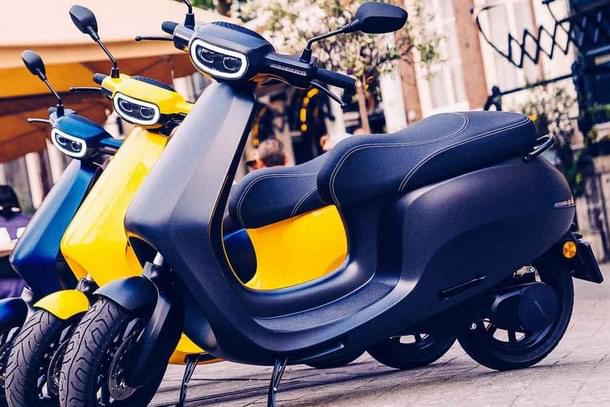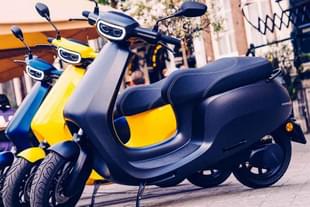Business
Ola Is Going To Eat Ather’s Lunch; Did The Latter Blunder On The Strategy Front?
Swarajya Staff
Aug 17, 2021, 10:38 AM | Updated 10:54 AM IST
Save & read from anywhere!
Bookmark stories for easy access on any device or the Swarajya app.


Ather energy’s 450x scooter was the best electric two-wheeler in the country. Until yesterday.
The surprisingly accelerated entry of Ola in the market with its two offerings S1 and S1 pro in a matter of few months has shocked and awed the existing competition not only in the EV segment but in the whole two-wheeler arena for no one offers the features, design and performance that Ola does at such affordable price (at least on paper for now; it will be best tested in real life conditions when the units start rolling out)
One can’t help but feel bad for Tarun Mehta and Swapnil Jain who founded Ather Energy in 2013 and literally started from scratch by strapping battery packs on a bicycle initially in their IIT Madras campus. For five long years, they persevered and worked on so many aspects to bring a commendable product to the market with 450 offering in 2018. The sporty, or rather the updated version (with better performance and features) 450x was launched in 2020 which was initially limited to select few cities and got expanded only in 2021.
If there are comparisons to be drawn with Elon Musk at all (as the Indian media is currently doing after the launch of Ola S1), then it’s Mehta and Jain who are more Musk-like than Ola’s founders which has taken the market by storm (thanks to impressive war-chest of investors) rather than by struggle.
But there is one important caveat. Musk did build an aspirational product in terms of quality but not the price point. In fact, the Tesla 3 model, company’s lowest offering is priced marginally higher than the country’s median income while Ather scooter’s price itself is more than double the median income in India. And it’s only a two-wheeler!
Tesla model 3 price is similar to premium model offering of Toyota Rav4, currently the best selling non-truck car in the US. Imagine a Tesla kind of EV in India which costs as much as Maruti Suzuki Swift‘s highest model.
Thus, Musk’s genius is not just delivering an aspirational product but doing so at unbelievable prices. This is where Mehta and Jain perhaps got their strategy wrong (or maybe it’s too early for them to scale up at the level Ola has managed to do). Ather has taken years to perfect their product, a luxury that Ola has been able to avoid thanks to massive investment in its gamble.
What’s more is that Ola is betting big on scale which is helping it keep costs much lower than the competition. Its superfactory in Tamil Nadu with a capacity to produce over a crore vehicles per annum by 2022 (which is 50 per cent of total two-wheeler demand in India) is going to more than compensate for lower profit margins of each unit compared to Ather and others.
Until now, Mehta justified high pricing compared to its rivals (until Ola came on the scene) stating that it’s offering is unique and offered more value than others.
“Cost is a factor of two things. One, it depends on what our production cost is. There, you are right that if production is increased, cost should come down. Right now, our capacity is 9,000 units per month which we hope to utilise fully by next year. When it increases to 30,000, 40,000, 50,000 units a month, then we can hope to cut costs. Second factor is what value the product is giving to the customer. If you compare to the competition in the market, you will notice that Ather 450x is not competing with typical electric scooters. 450x is India’s fastest accelerating scooter. You are getting a different level of feel and performance with 450x,” Mehta had said in an interview in May.
He added: "The dashboard or the touchscreen has android embedded in it with Google Maps integration, there is Bluetooth connectivity - these features are not just advanced in India but in the world. It’s the most globally advanced touchscreen and it’s a matter of pride that the most advanced connectivity suite in the world is an Indian product. So for the features offered, we have set a specific price point. Cost (of production) is one thing but, the cost we have set is for the value that its providing."
Now with Ola’s entry, Ather is no longer the fastest accelerating scooter in India (and certainly not in top speed, power or torque) nor is it unique anymore in terms of providing a touchscreen dashboard with features like Bluetooth or WiFi or reverse gear. Moreover, it’s missing some insanely attractive features like cruise control and hill hold that Ola is offering. Ola also scores over 450x in maximum range per charge which is considerably higher in the former’s pro model (which is still cheaper than 450x).
Perhaps, Ather didn’t expect that a force like Ola will upset its apple cart in such a spectacular manner. It was hoping to grow on the back of a strong support and slowly capture the market, cut costs or turn profitable on the back of growing sales volumes. Alas. Ola has turned the whole thing upside down by focusing on volumes as much as on the product thereby being appealing to lakhs of people even before producing a single unit.
It doesn’t mean that one starts predicting doomsday scenarios for Ather. On the contrary, the market is quite diverse in taste and demands. So, there is a very good chance that Ather keeps growing at the same pace it intended to. Moreover, there is lot of upside of Ola’s entry for even Ather.
As Mehta explained in one of the interviews, “It (automotive) is a big market. There are a lot of products that can exist in so many segments for so many use cases and one company can‘t cater to all that. In such a scenario, entry of more players is good for the market because to educate a billion people about electric vehicles is a huge task and a single company can’t do it. We are very happy with more players coming in because supply chains get expanded, customer awareness goes up and government becomes more confident about policy making. It all helps.”





